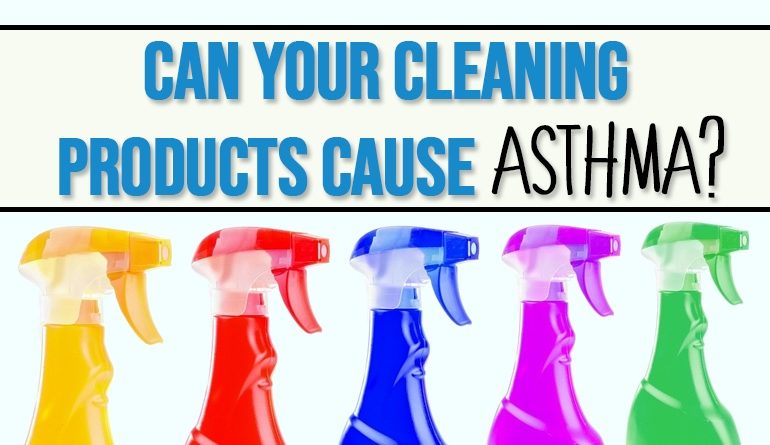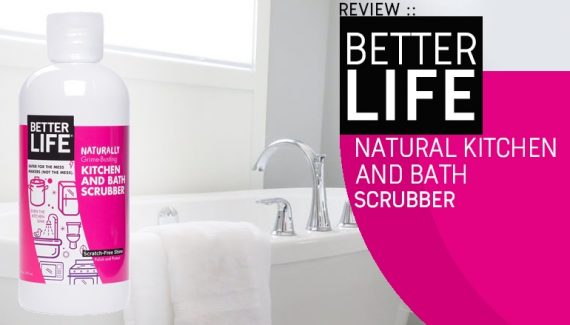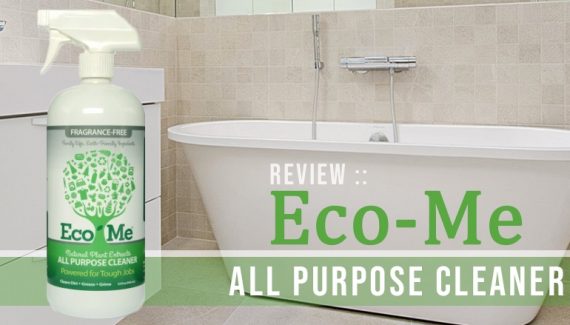Safe Household Cleaning is reader-supported. All reviews are independent and any products reviewed are purchased by the site owner. To help fund this model, some of the links on the site are affiliate links. If you decide to make a purchase from one of these links, this site will receive some commission. At no cost to you. It helps keeps this place running. Learn more
Most homes have a cupboard filled with cleaning products – bleaches, furniture polishes, disinfectants, detergents, or diffusers – each containing a variety of ingredients. A recent study identified 588 unique ingredients in commonly used cleaning products, very few of which appear on ingredient labels [1].
This article will evaluate some of the most controversial ingredients, and propensity to induce asthma.
What are the Asthma Triggers in my Cleaning Products?
Cleaning products have been shown to directly cause new-onset asthma, as well as trigger attacks, in both adults and children [2]. In adults, cleaning and nursing are occupations associated with the highest risk of new asthma diagnoses. Ingredients may contribute to asthma through two main mechanisms, ‘sensitizing’ or ‘irritating
Sensitizers
When frequently exposed to ingredients (‘sensitizers’), certain people can develop a hypersensitive immune response (with increased levels of ‘immunoglobulin E’ or ‘IgE’). Pollen causing hay fever is the most common example. The following ingredients may cause increased levels of IgE, contributing to asthma over months to years.
Aldehyde Disinfectants (e.g. formaldehyde, glutaraldehyde, phthalaldehyde)
Used for: Frequently used as industrial and medical disinfectants, or in lower concentrations as preservatives in cosmetics.
Evidence: A 2010 review evaluated data for over 6,300 participants, determining that at the highest levels of aldehyde exposure, there was a 3.5 times higher risk of developing asthma [3]. Aldehyde disinfectants are both sensitizers and irritants, with formaldehyde-specific IgE levels in those affected inconsistent – further research is required [4].
Terpene Fragrances (e.g. pinene, limonene)
Used for: Help to mask the unpleasant smell of ingredients found in cleaning products. The smell is determined by the precise chemical structure, but typically citrus.
Evidence: Exposure to terpenes has been associated with an increased risk of asthma, especially in those working with citrus fruits [5]. The new-onset respiratory insufficiency develops after roughly two weeks of exposure, indicating IgE-mediated sensitization. Terpenes can also react with ozone in the air to form ‘secondary pollutants’ such as formaldehyde and acetaldehyde, which are themselves linked to asthma (above).
Ethanolamides (e.g. monoethanolamine, diethanolamine)
Used for: These compounds have both a ‘polar’ and ‘non-polar’ component, and so are used to emulsify water- and fat-soluble ingredients in cleaning products.
Evidence: On exposure to inhaled ethanolamides, severe bronchoconstriction is observed in both animal studies and human case reports [6]. This bronchoconstriction is relieved with antihistamines, suggesting an immune response. The correlation between this observation and asthma attacks related to cleaning products is poorly understood, requiring further research.
Irritants
A much simpler mechanism, these compounds directly irritate the mucosal lining of the lungs triggering asthma attacks. This type of asthma attack can be categorized as ‘reactive airway dysfunction syndrome’ (RADS), and typically triggers asthma attacks within minutes.
Bleaches (e.g. sodium hypochlorite, ammonia)
Used for: Strong oxidizers, these compounds have strong bleaching, deodorizing, and disinfectant properties. The main component of household and industrial bleaches.
Evidence: Chlorine is a strong irritant, even at low concentrations (1ppm can cause eye and nose irritation after a few minutes). When cleaning products are mixed, the chlorine and ammonia can release toxic and volatile ‘chloramines’ – shown to significantly increase the incidence of asthma attacks [7]. Even swimming pools may be associated with the risk of asthma attacks, because of chlorine disinfectants – although children that regularly swim have better lung function and less asthma symptoms [8].
Quaternary Ammonium Compounds (e.g. benzalkonium chloride)
Used for: Cationic surfactants are widely used in cleaning products to reduce the surface tension of water, and as preservatives in cosmetic and pharmaceutical products.
Evidence: Benzalkonium chloride exposure may trigger asthma attacks and is thought to be responsible for an increased incidence of new asthma diagnoses in nurses who frequently use disinfectants [9]. Interestingly, until recently many nebulized therapies for asthma (salbutamol and ipratropium) contained benzalkonium chloride as a preservative – and so inhalation does not universally trigger severe asthma attacks [10].
Alkaline Agents (e.g. sodium hydroxide, silicates)
Used for: Strongly corrosive alkalis can be used to increase the pH of bleaches and other cleaning products to increase their efficacy, helping to dissolve fatty substances.
Evidence: These alkali agents can directly irritate the lining of the lungs when inhaled. The mechanism is perhaps the simplest – irritation to the lungs triggering bronchoconstriction in asthmatic patients – but the prevalence of strong alkalis in cleaning products makes the ingredients a common cause of asthma attacks [11].
So What Alternative Measures Can I Take?
The mix of sensitizers and irritants in cleaning products is a dangerous combination for those diagnosed with asthma, and for those frequently exposed to cleaning products so at risk of developing asthma. There are several steps to help reduce the risk of triggering asthma attacks when cleaning:
- Minimize the use of cleaning products as much as possible
- Ask others to help, especially when the use of bleaches and stronger cleaning products is required
- Where possible just use warm soapy water
- Always clean in well-ventilated areas, with windows and doors open
- Stand the recommended distance way when using cleaning sprays
- Never mix cleaning products
- Don’t rely on products branded as ‘natural’, ‘hypoallergenic’ or ‘green’
- Use milder cleaning products
- Consider cleaning products which are preservative- and fragrance-free
The last three points particularly relevant and where we can add value. Most cleaning product manufacturers do not disclose their ingredients. They aren’t obliged to by law, so they don’t. It’s a shameful situation that is slowly changing – with the onus being on the word “slowly”.
While we’re waiting on regulations to catch up, we will only promote manufacturers who do voluntarily disclose the contents of their products. The beauty of these manufacturers is, they are more likely take pride in their ingredients and the quality of their product is better.
In all our reviews, we provide expert analysis of what the products contain – giving you the information you need to see if its the product for you.
And that’s why we are here.
You’re Welcome!
References
[1] DeLeo, P. C., Ciarlo, M., Pacelli, C., Greggs, W., Williams, E. S., Scott, W. C., & Brooks, B. W. (2018). Cleaning Product Ingredient Safety: What Is the Current State of Availability of Information Regarding Ingredients in Products and Their Function? ACS Sustainable Chemistry & Engineering, 6(2), 2094-2102.
[2] Quirce, S., & Barranco, P. (2010). Cleaning agents and asthma. Journal of Investigational Allergology and Clinical Immunology, 20(7), 542-50.
[3] McGwin Jr, G., Lienert, J., & Kennedy Jr, J. I. (2010). Formaldehyde exposure and asthma in children: a systematic review. Environmental Health Perspectives, 118(3), 313.
[4] Doi, S., Suzuki, S., Morishita, M., Yamada, M., Kanda, Y., Torii, S., & Sakamoto, T. (2003). The prevalence of IgE sensitization to formaldehyde in asthmatic children. Allergy, 58(7), 668-671.
[5] Guarneri, F., Barbuzza, O., Vaccaro, M., & Galtieri, G. (2008). Allergic contact dermatitis and asthma caused by limonene in a labourer handling citrus fruits. Contact Dermatitis, 58(5), 315-316.
[6] Savonius, B., Keskinen, H., Tuppurainen, M., & Kanerva, L. (1994). Occupational asthma caused by ethanolamines. Allergy, 49(10), 877-881.
[7] Taylor, A. J. (1996). Respiratory irritants encountered at work. Thorax, 51(5), 541.
[8] Font-Ribera, L., Villanueva, C. M., Nieuwenhuijsen, M. J., Zock, J. P., Kogevinas, M., & Henderson, J. (2011). Swimming pool attendance, asthma, allergies, and lung function in the Avon Longitudinal Study of Parents and Children cohort. American Journal of Respiratory and Critical Care Medicine, 183(5), 582-588.
[9] Rosenman, K. D., Reilly, M. J., Schill, D. P., Valiante, D., Flattery, J., Harrison, R., & Filios, M. (2003). Cleaning products and work-related asthma. Journal of Occupational and Environmental Medicine, 45(5), 556-563.
[10] Beasley, R., Burgess, C., & Holt, S. (2001). Call for worldwide withdrawal of benzalkonium chloride from nebulizer solutions. Journal of Allergy and Clinical Immunology, 107(2), 222-223.
[11] Baur, X., Marczynski, B., & Czuppon, A. B. (1997). Ammonia as inhalatory irritant. Pneumologie (Stuttgart, Germany), 51(12), 1087-1092.



No Responses Yet